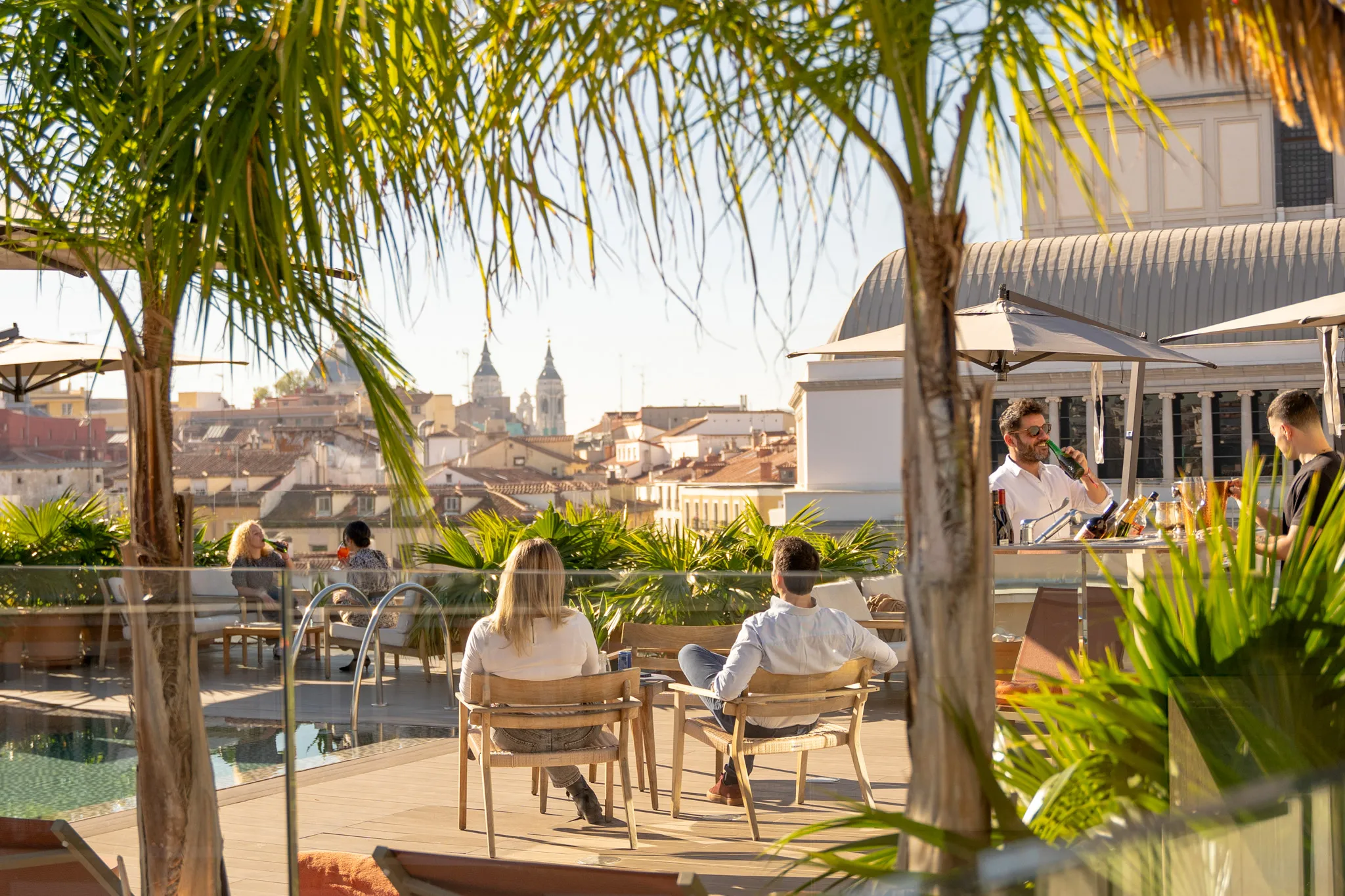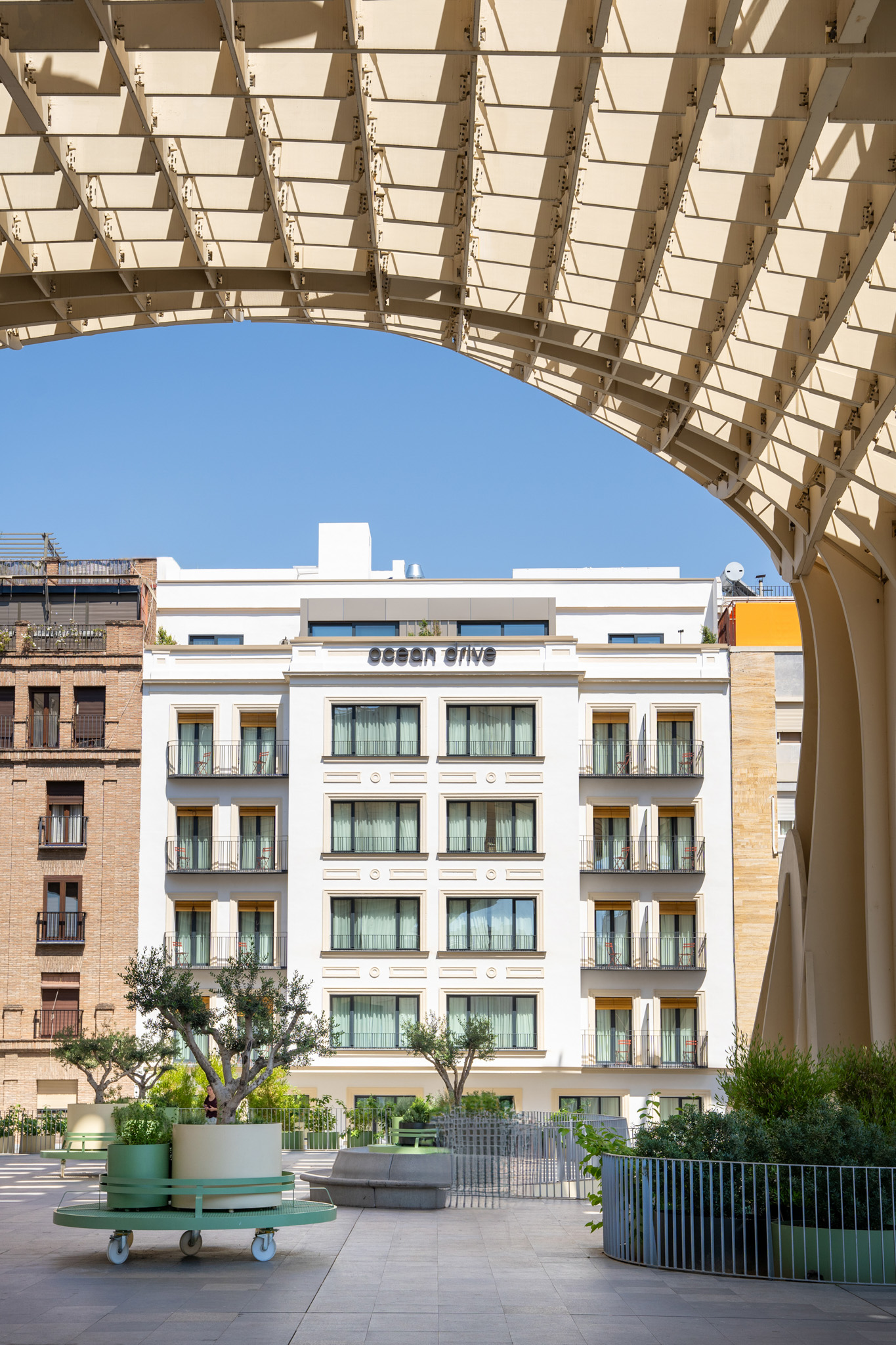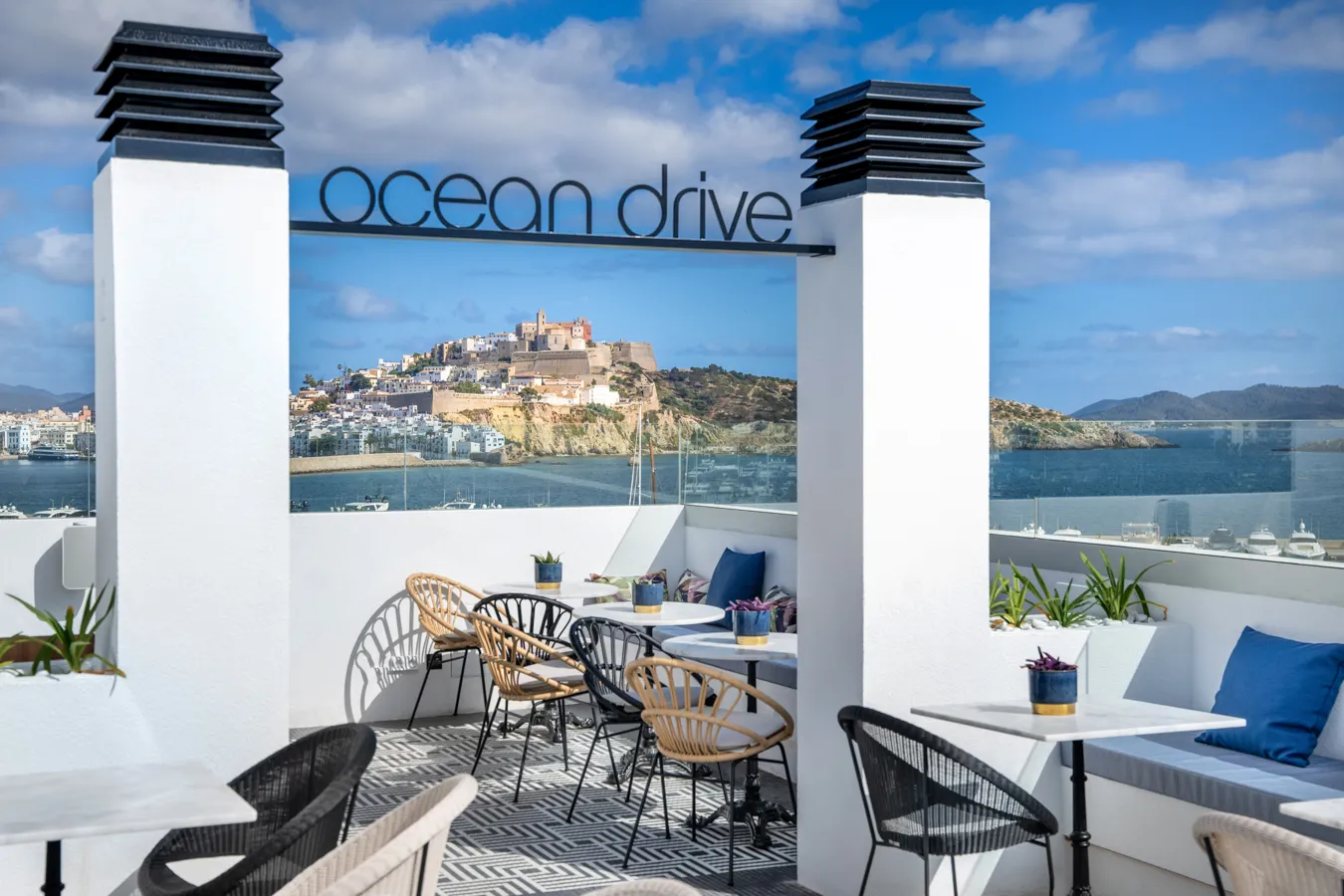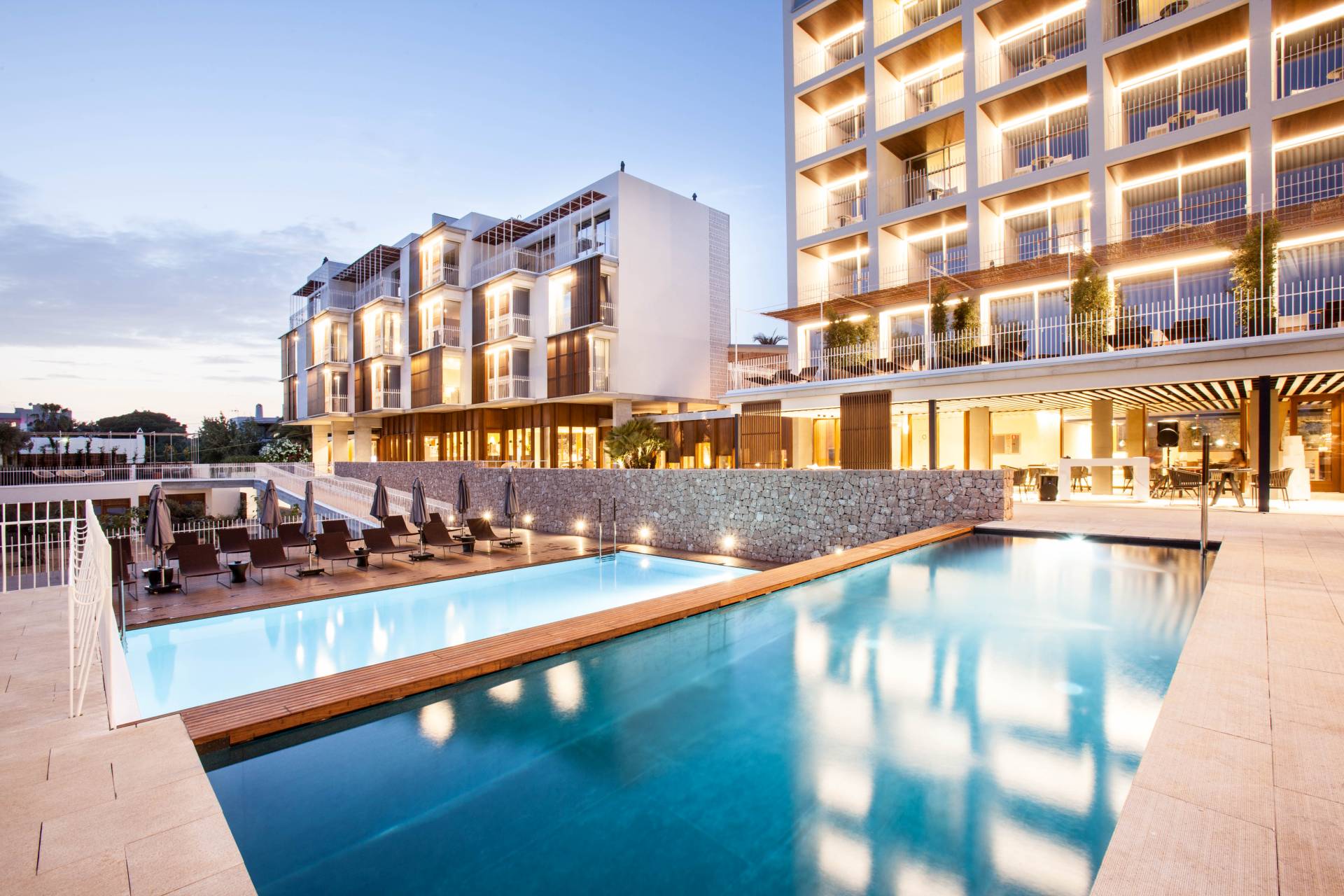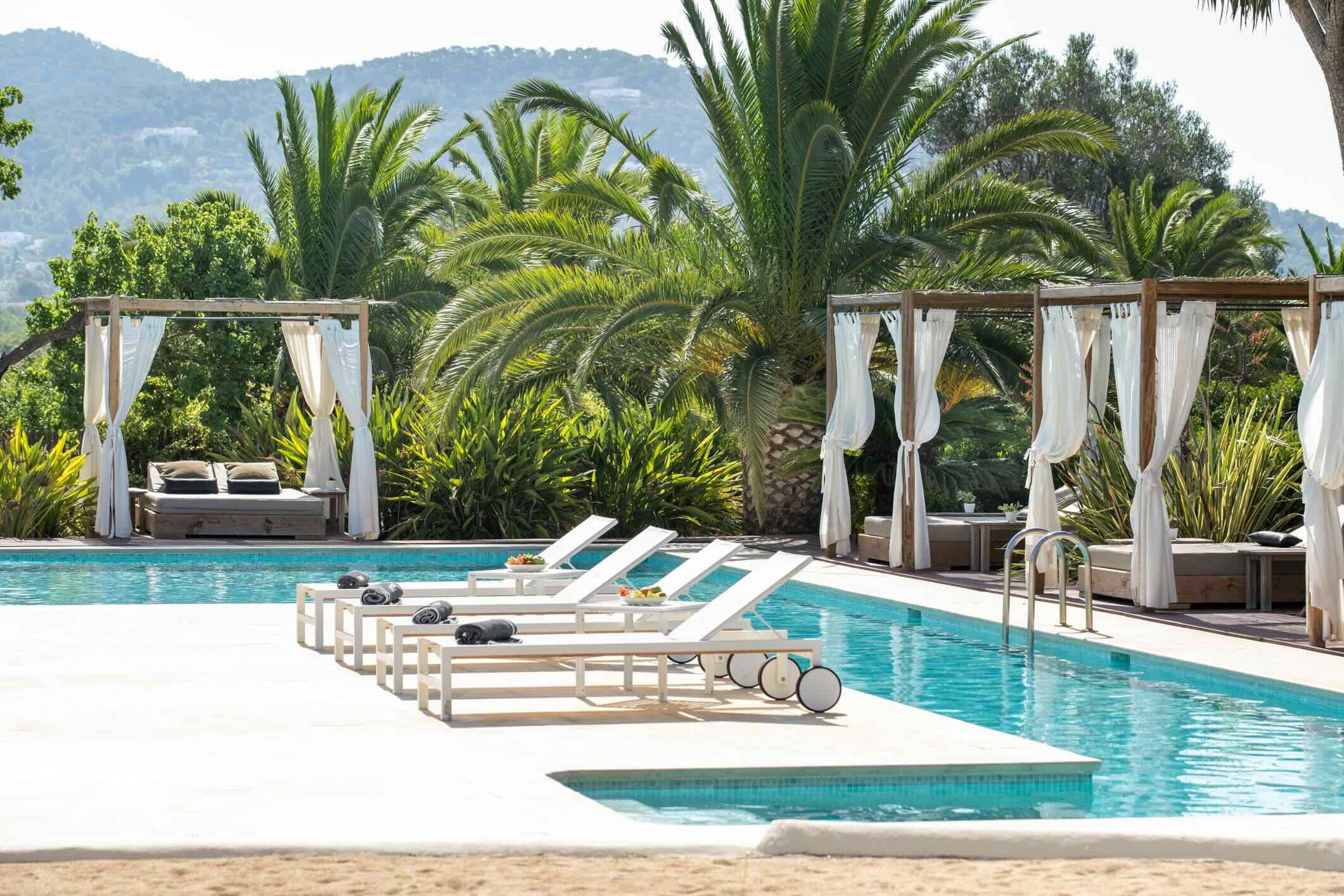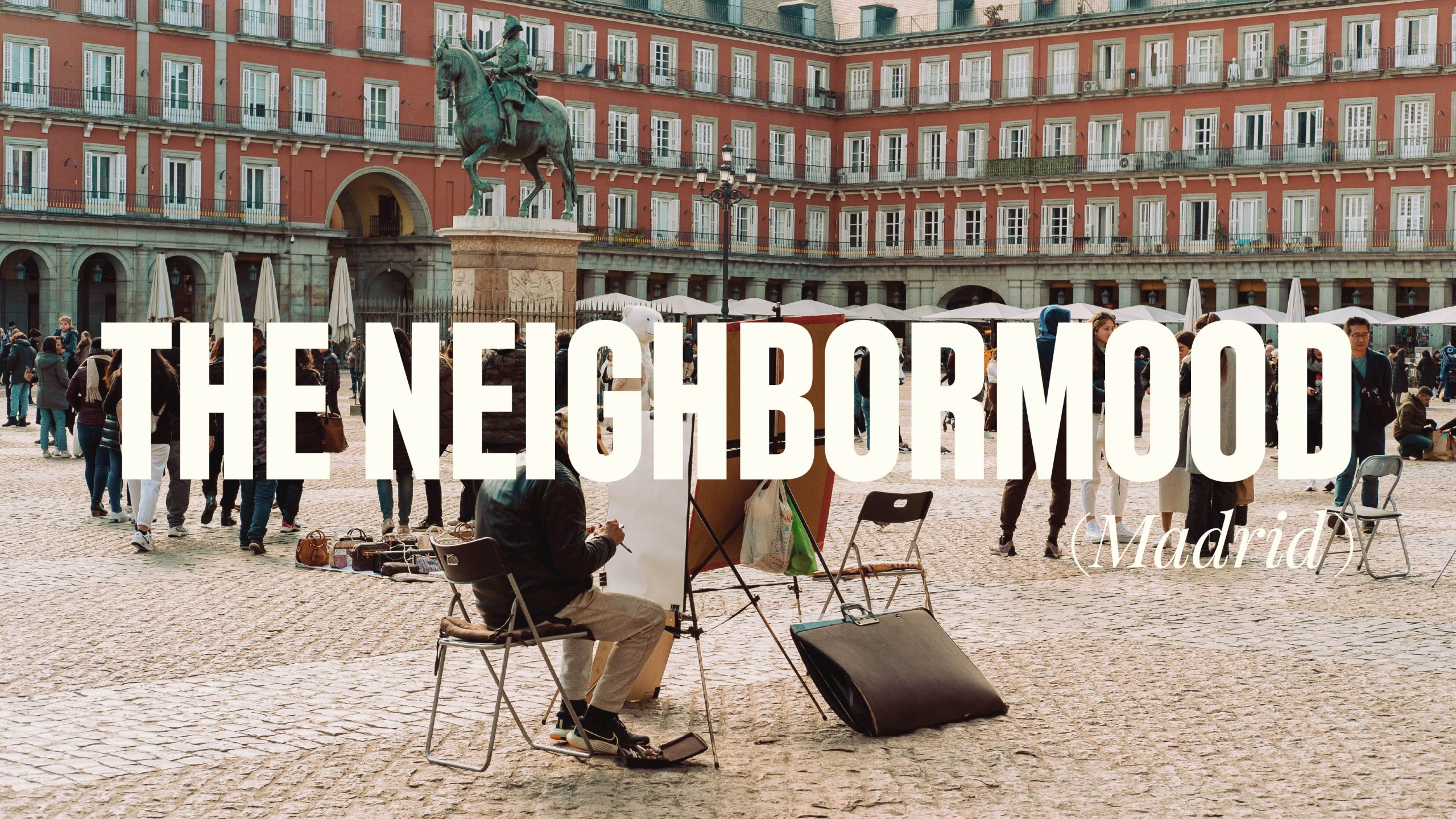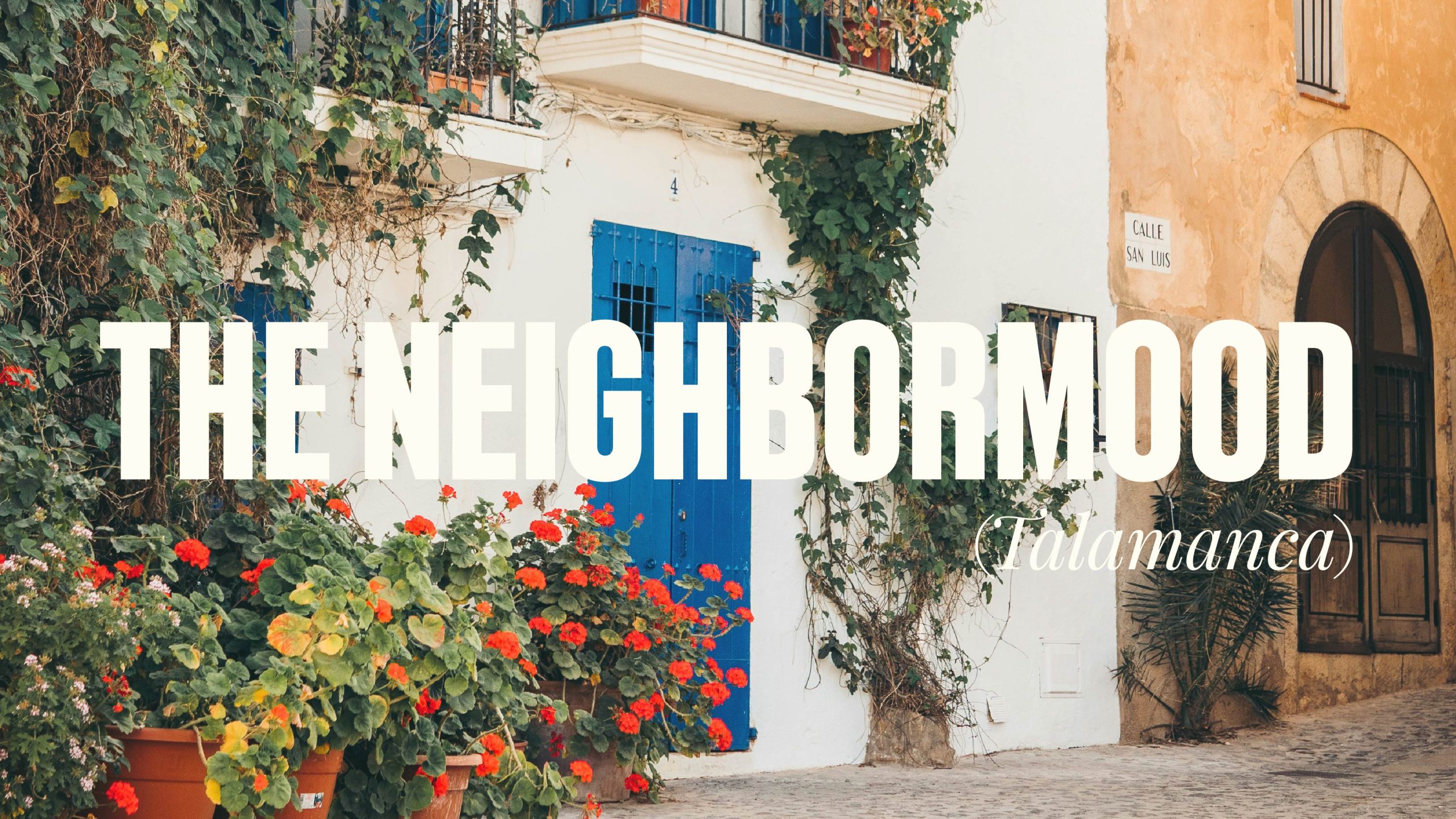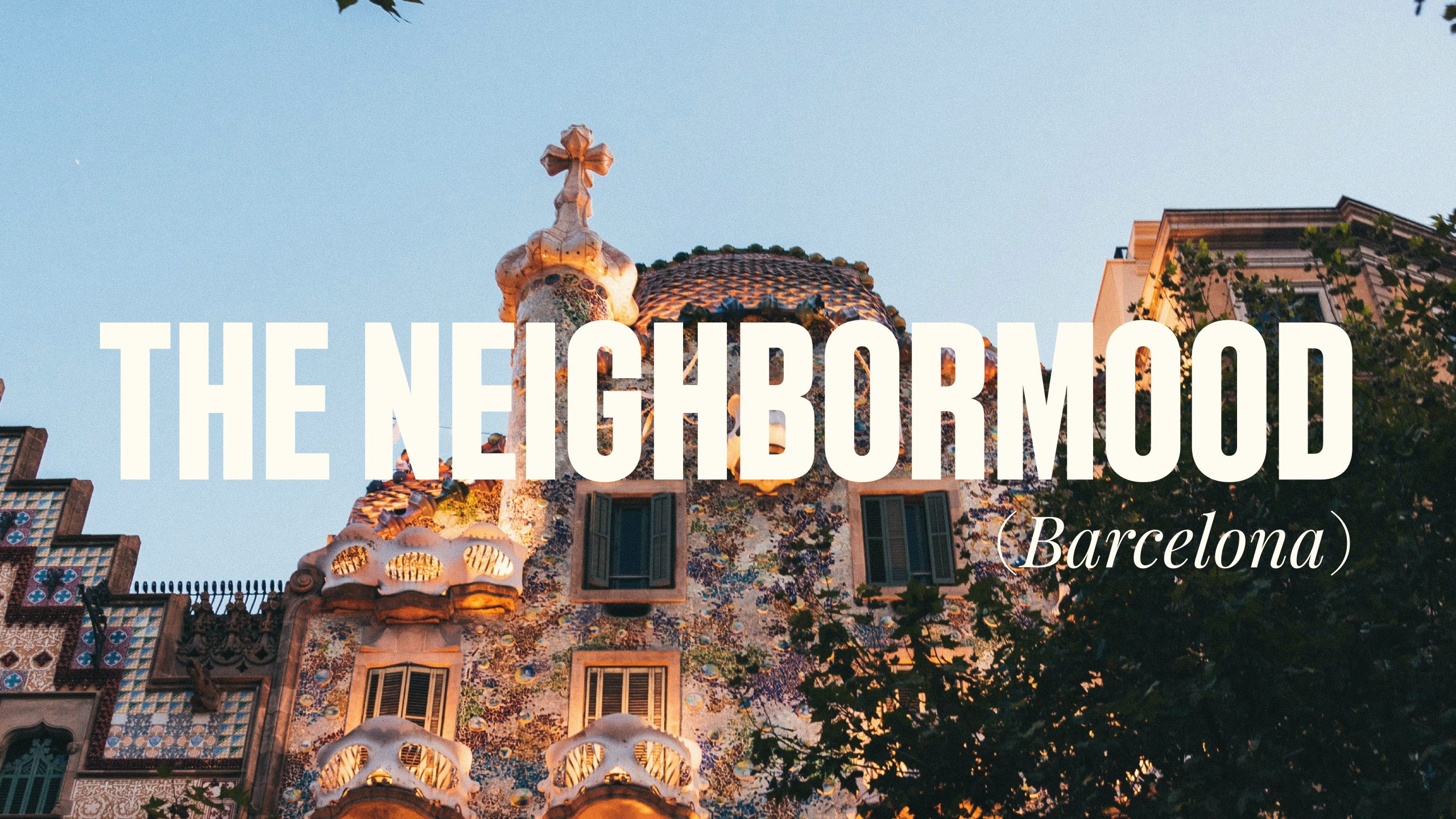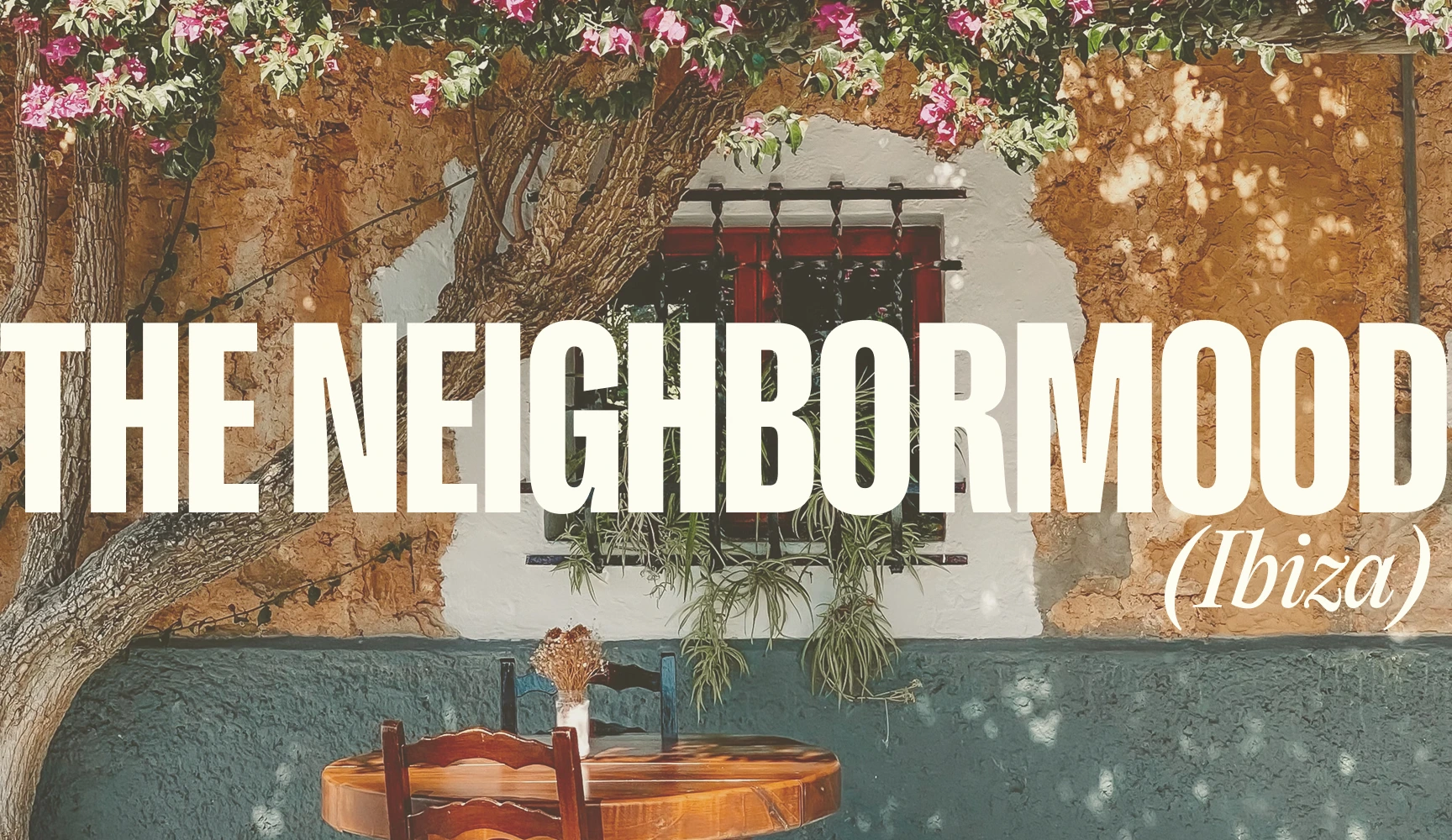Steps away from everything you want to explore
An unbeatable location in the heart of the city, Plaza de Isabel II, opposite the Opera Palace, a few steps from the Royal Palace, Plaza Mayor, Puerta del Sol and Gran Vía, as well as a stroll through emblematic neighbourhoods such as La Latina, Huertas, Los Austrias, Malasaña and Chueca.
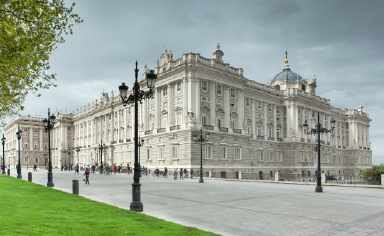
Royal Palace and Plaza de Oriente
With an area of 135,000 m² and 3,418 rooms, it is the largest royal palace in Western Europe and one of the largest in the world. It houses a valuable historical-artistic heritage, including a set of musical instruments known as the Stradivarius Palatinos, and very important collections of other disciplines such as painting, sculpture and tapestry. The state rooms and art collections are open to visitors when there are no official events.
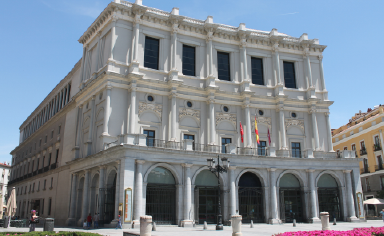
Teatro Real
The Teatro Real is Madrid's opera house. It is located in the Plaza de Oriente, opposite the Royal Palace. Its construction began in 1818, and it was inaugurated in 1850. It remained an uninterrupted opera house until 1925, when it had to close due to structural problems in the building. It did not reopen its doors until 1966, as a symphony concert hall. Between 1988 and 1997, it underwent a major refurbishment to convert it back into an opera house.
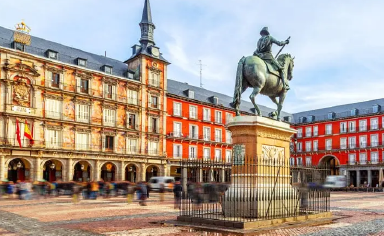
Plaza Mayor
The Plaza Mayor is currently an important tourist attraction, visited by thousands of tourists every year. In the commercial premises located under the arcades, there is an abundance of hotel and catering businesses, which set up terraces next to the arcades of the square. It is also a popular venue for festivals, such as the concerts offered free of charge to the locals during the San Isidro festivities. Every December, the traditional Christmas market is held here, a custom that has been in place since 1860. The philately and numismatics market is also held every Sunday morning and on public holidays.
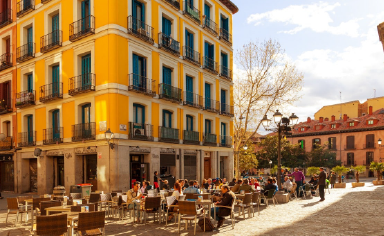
Il Barrio de la Latina
La Latina is a lively neighborhood set in the grounds of a medieval Islamic fortress, a labyrinth of narrow streets with numerous tapas bars and taverns. The Royal Basilica of San Francisco el Grande, with works by Goya, and the church of San Pedro el Viejo, which has a Mudejar tower, are two of the neighbourhood's landmarks. On Sundays, both the El Rastro flea market and the cafés and street food stalls in the area fill up with visitors.
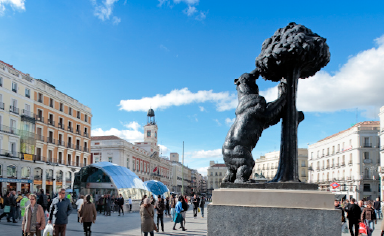
The Puerta del Sol
Puerta del Sol is one of the most famous squares in Madrid and the meeting point par excellence for locals and tourists alike. It is home to some of the capital's most significant landmarks and buildings, such as Kilometre Zero.

Barrio de las Letras
The main artery of the Barrio de Las Letras, Calle Huertas has engraved on its cobblestones some of the most famous verses of 16th and 17th century literature, in honour of illustrious neighbours such as Miguel de Cervantes, Lope de Vega, Francisco de Quevedo and Luis de Góngora. That spirit of a ludic neighbourhood with its many taverns and inns is still alive today.
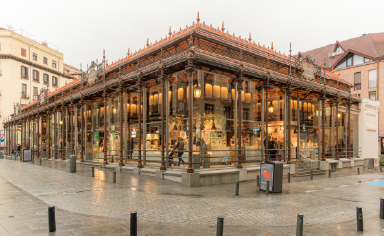
San Miguel Market
More than 100 years have passed since the Mercado de San Miguel was inaugurated as a food market. Today, this historic building is one of the world's leading gastronomic markets, allowing visitors to take a tour of the essence and flavours of every corner of Spain.
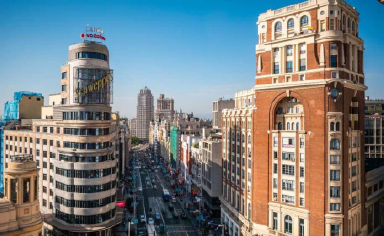
Gran Vía
Founded between 1910 and 1929, Gran Vía is Madrid's most famous boulevard. It connects the Salamanca and Argüelles districts and is home to shops, restaurants and some of the capital's most iconic buildings.

